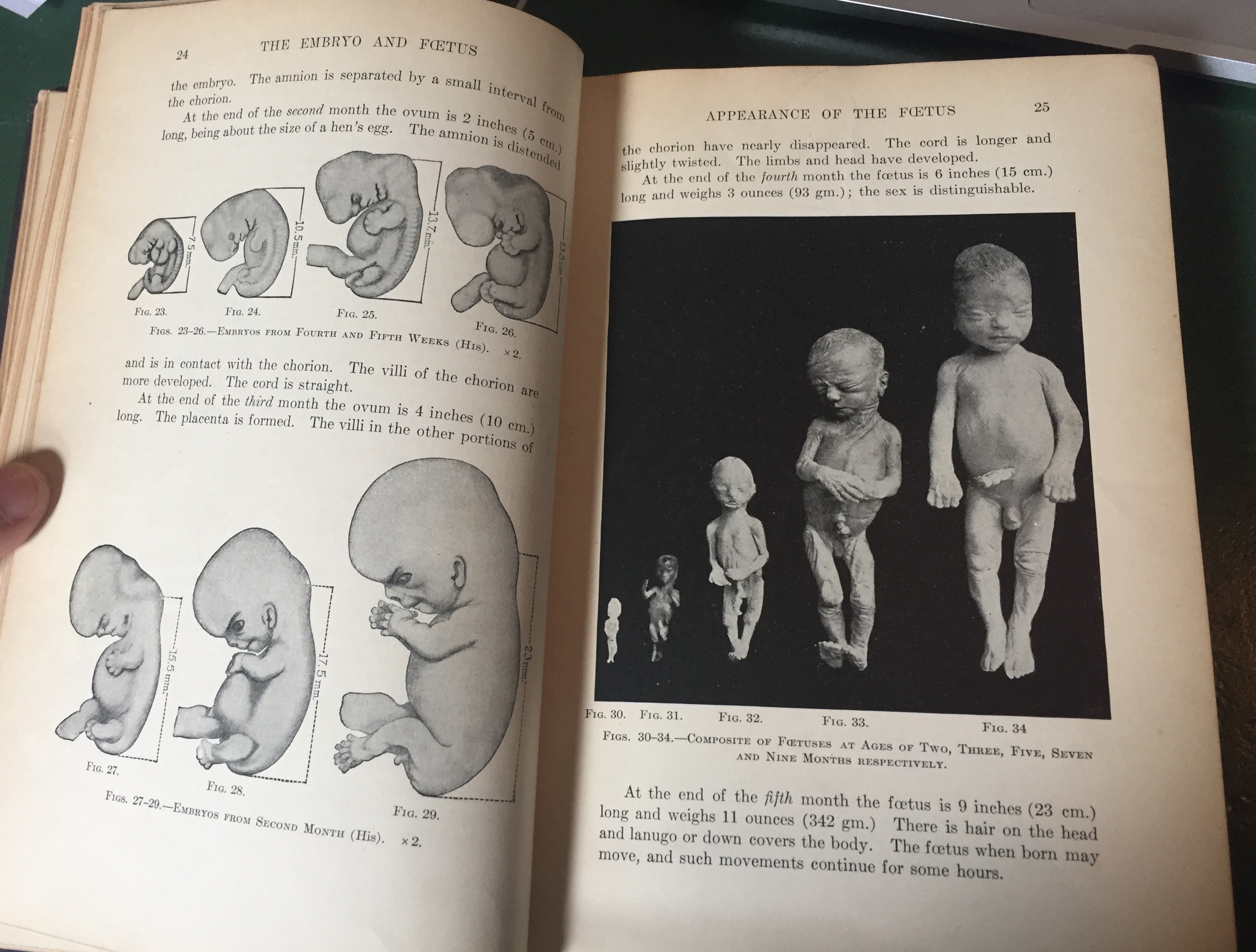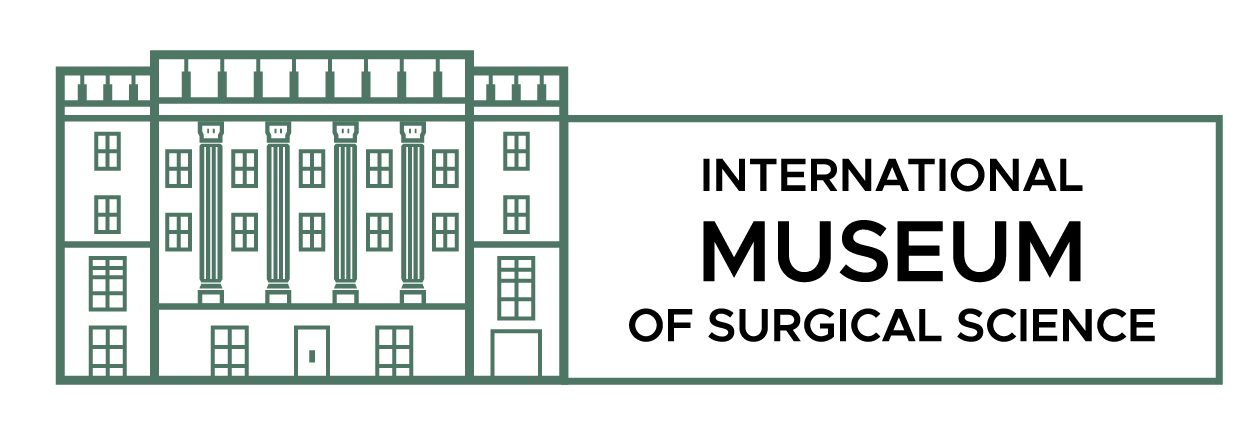This is Part I of the three-part essay, Sever and Suture: On the History and Future of Anatomical Dissection. Part II and Part III can be found on the Museum Blog.
Content Disclaimer:
The following article discusses potentially disturbing subject matter which may not be appropriate for all audiences. The views and opinions expressed in this essay are those of the authors and do not necessarily reflect the official policy or position of
the International Museum of Surgical Science.
Published by Tannaz Motevalli.
Part I: Unclaimed and Unidentified
As Library Intern at the International Museum of Surgical Science (IMSS) working towards the conservation of rare medical books, some of the smallest moments of excitement and joy include finding red rot (the process of degradation found in leather book covers), foxing (the deterioration of old paper), or evidence of insect damage. All in all, these things can be rare finds compared to the more commonly damaged spines, handwritten notes, and general mechanical damages. I think what makes these things so exciting is simply the fact that they serve as evidence of time and what I think of as the “lived experience” of the book.
I recently was going through a consistent chunk of books on gynecology and obstetrics, ranging from 1890 to 1930, and one struck me as especially important: A Text-book of Obstetrics by Adam H. Wright from 1905. At first, it was simply because of the vast number of anatomical photos and drawings. After closer inspection, I noticed that many of the jarring photos of preserved and dissected pregnant women and fetuses were sourced from the Toronto University Museum of Anatomy. I was curious and eager to learn more about that collection. Finally, my interest in this book peaked when I found a tiny pressed flower placed in between two pages, nudged up close to the spine.

A Text-book of Obstetrics by Adam H. Wright (1905), pg 25
The most curious thing about the book was simply that it brought to mind so many thoughts and questions all poetically wrapped up into this moment of discovering a preserved flower laying dormant and unknown for who knows how long. But it too was a jarring experience—on a fundamentally human level—I think there is always going to be something a little disturbing about looking at images of unborn fetuses, especially in death, no matter how much you can detach yourself. This is a common theme within the library and collection at the IMSS—the history of medicine is fraught with the constant negotiation of how to be human when confronted with human life, affliction, and death.
I decided to look into the Toronto University Museum of Anatomy, as that is where the majority of the photos of preserved human specimens included in this book were sourced. As it turns out, this museum is a bit of a mystery as it is only accessible to U of T medical students. The museum was founded by Dr. John Charles Boileau Grant, a well-known anatomist and professor at U of T from 1930 to 1956. He wrote Grant’s Atlas of Anatomy, the widely used counterpart to the popularized Gray’s Anatomy.
In 2007, Joseph Hall, a medical reporter for Canada’s newspaper The Star, writes that the J.C.B. Grant Anatomy Collection houses hundreds of human specimens mostly dating back to the early 1900s. John Albanese, a University of Windsor anthropologist who studied the Anatomy Museum, told Hall that during the museum’s inception the collection was intended to be interactive with “hands-on teaching.” According to Albanese this was “quite revolutionary at the time” since during the 1920s and ’30s anatomy education was rather “hands-off.” According to Albanese:
“In the late 1800s, Ontario began to allow the use of unclaimed – and usually unidentified – bodies that would otherwise require a government sponsored burial. It was these sad and anonymous paupers who provided most of the museum’s body parts, now bleached a pale grey from decades in formaldehyde” (Hall, 2007.)
Charlie Storton, a 91 year-old man responsible for much of the museum’s specimen dissection, pointed out to Hall that, in fact, not all of the bodies belonged to paupers. “We had a fellow who arrived here in a bronze casket, he had willed his body,” said Storton. Another corpse he cites belonged to a “young and healthy-looking female” who had mysteriously died at the Royal York Hotel in the ’30s. Storton states, “Nobody knew who she was, so we got her.” (Hall, 2007.)
When I began researching the J.C.B. Grant Anatomical Museum, I had hoped to easily find the exact stories of the bodies pictured across this book that I had been spending over an hour delicately leafing through. But of course, I could not find explanations for how the bodies of pregnant women and unborn fetuses were acquired by the museum, let alone who those people might have been. Instead I was left with even more questions, questions harder to answer. How does science grapple with loss? How does anatomy grieve the deaths of its subjects—if we refer to them as such? How should we refer to the bodies? As subjects, objects, corpses, people? And most importantly, have contemporary ethics around cadaver acquisition evolved to finally grieve the deaths of these people? In many ways, these questions feel a bit foolish. In the process of dissecting and studying the body, there cannot be much room for grief, otherwise the work must become rather difficult. But as a non-medical professional surrounded by books and artifacts exploring the history of medicine—both dark and light, but often somewhere in between—I am constantly trying to find ways to explore empathy in the most seemingly apathetic of places.
Ronn Wade, the director of the Maryland State Anatomy Board and the Anatomical Services Division at the University of Maryland School of Medicine, spoke with Jeanette Der Bedrosian for her 2016 Johns Hopkins Magazine article and provided insight on cadaver acquisition for medical students in Maryland:
“The board gets its bodies in one of two ways: Either the person has filled out a short form willing his or her body to donation, or the deceased becomes a “donor by circumstance,” as Wade calls it. In those cases, either the family could not be reached or they’re unable to take custody of the body for financial or logistical reasons (they can’t afford a funeral, or the family lives out of state, for example). After 72 hours, it legally becomes the responsibility of the board, an entity within the Maryland Department of Health and Mental Hygiene, to take control of the body. “The issue is, I have a person here who the paramedics could train on, that I have no pending claim on, that can help them learn to save people’s lives,” Wade says. “Or, I can hold off on it and the body’s going to slowly decay away.” It becomes a public health issue at that point, he says, so he opts to use the bodies in the way that does the most good” (Der Bedrosian, 2016.)
To be clear, it is quite common for almost every medical student to be expected to dissect a cadaver at some point in their medical school education. And it is, of course, extremely crucial that today’s doctors understand human anatomy in order to provide safe, informed, and necessary care for their patients. But let me be a little critical here. For the family that is too poor to afford a funeral and for the person who has no one to identify them at the coroner’s – what makes them much different from the “unclaimed” and “unidentified,” the “sad and anonymous paupers,” and the grave-robbed and executed bodies from the early 1900s in Ontario that Joseph Hall refers to? Despite the ability to donate one’s body to science, cadaver acquisition is still coded in socio-political issues of class, access, and privilege.
But what do we do with this? We cannot forget or ignore the historical practices that exploit marginalized people. But in writing this essay, I must recognize not only the ease of forgetting but the simple fact that this history has gone unacknowledged for many years and is arguably unknown. My hope is to use this essay to provide some clarity and to explore the nuances and complications of this topic and its history.
Part II: A Brief (and Devastating) History of Cadaver Acquisition can be found on the Museum Blog here.
Sources:
Der Bedrosian, Jeanette. “First-year medical students rely on cadavers to learn anatomy.” Johns Hopkins Magazine. Winter 2016. https://hub.jhu.edu/magazine/2016/winter/cadavers-anatomy-medical-school/
Ghenu, Mike. “Scoping out the med students’ secret lair.” The Varsity, University of Toronto. March 2006. https://thevarsity.ca/2006/03/13/scoping-out-the-med-students-secret-lair/
Hall, Joseph. “A Macabre Collection.” The Star. July 2007. https://www.thestar.com/news/2007/07/07/a_macabre_collection.html
Wright, Adam H. A Text-book of Obstetrics. D. Appleton and Company: Toronto, 1905.
Tannaz Motevalli is a Chicago-based artist, writer, and researcher. She is the current Library Intern at the International Museum of Surgical Science. Her interests include performative writing, the intersections of personal and institutional/systemic histories, and archives as a form of storytelling.

